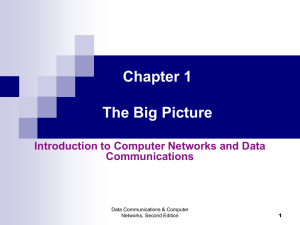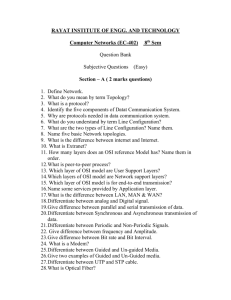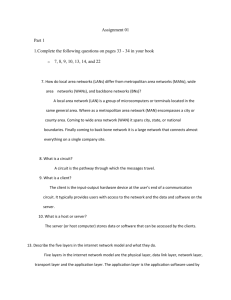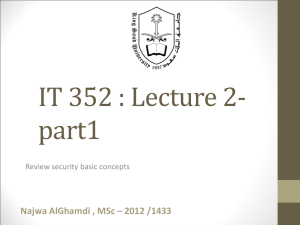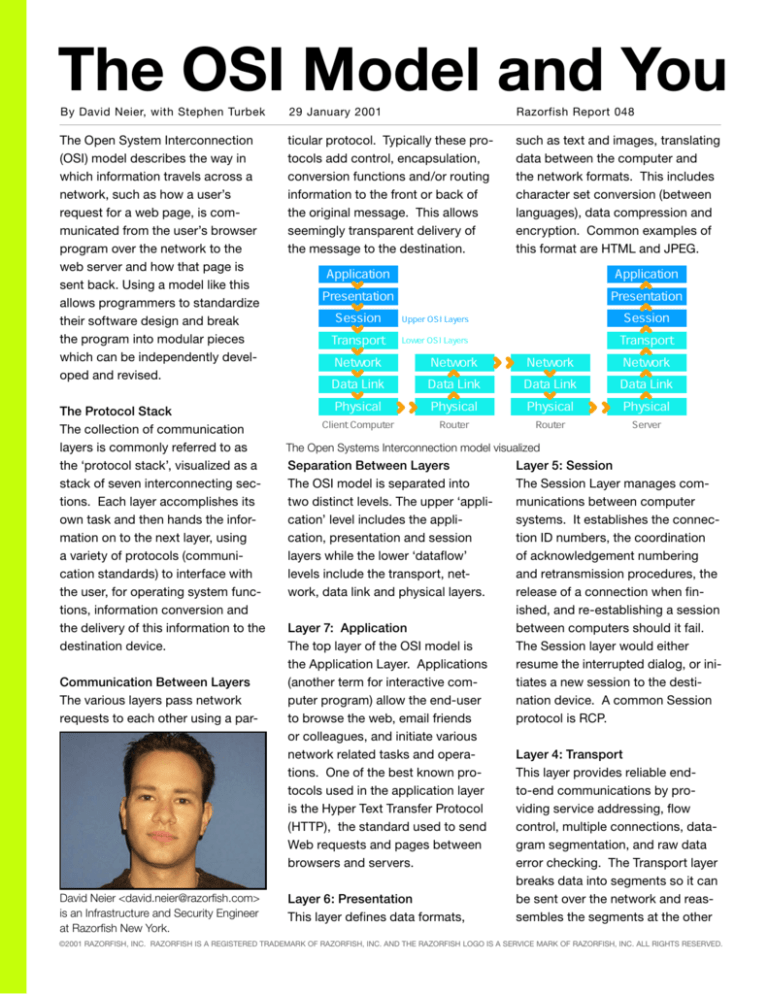
The OSI Model and You
By David Neier, with Stephen Turbek
29 January 2001
Razorfish Report 048
The Open System Interconnection
(OSI) model describes the way in
which information travels across a
network, such as how a user’s
request for a web page, is communicated from the user’s browser
program over the network to the
web server and how that page is
sent back. Using a model like this
allows programmers to standardize
their software design and break
the program into modular pieces
which can be independently developed and revised.
ticular protocol. Typically these protocols add control, encapsulation,
conversion functions and/or routing
information to the front or back of
the original message. This allows
seemingly transparent delivery of
the message to the destination.
such as text and images, translating
data between the computer and
the network formats. This includes
character set conversion (between
languages), data compression and
encryption. Common examples of
this format are HTML and JPEG.
The Protocol Stack
The collection of communication
layers is commonly referred to as
the ‘protocol stack’, visualized as a
stack of seven interconnecting sections. Each layer accomplishes its
own task and then hands the information on to the next layer, using
a variety of protocols (communication standards) to interface with
the user, for operating system functions, information conversion and
the delivery of this information to the
destination device.
Communication Between Layers
The various layers pass network
requests to each other using a par-
David Neier <david.neier@razorfish.com>
is an Infrastructure and Security Engineer
at Razorfish New York.
Application
Application
Presentation
Presentation
Session
Upper OSI Layers
Session
Transport
Lower OSI Layers
Transport
Network
Network
Network
Network
Data Link
Data Link
Data Link
Data Link
Physical
Physical
Physical
Physical
Client Computer
Router
Router
Server
The Open Systems Interconnection model visualized
Separation Between Layers
The OSI model is separated into
two distinct levels. The upper ‘application’ level includes the application, presentation and session
layers while the lower ‘dataflow’
levels include the transport, network, data link and physical layers.
Layer 7: Application
The top layer of the OSI model is
the Application Layer. Applications
(another term for interactive computer program) allow the end-user
to browse the web, email friends
or colleagues, and initiate various
network related tasks and operations. One of the best known protocols used in the application layer
is the Hyper Text Transfer Protocol
(HTTP), the standard used to send
Web requests and pages between
browsers and servers.
Layer 6: Presentation
This layer defines data formats,
Layer 5: Session
The Session Layer manages communications between computer
systems. It establishes the connection ID numbers, the coordination
of acknowledgement numbering
and retransmission procedures, the
release of a connection when finished, and re-establishing a session
between computers should it fail.
The Session layer would either
resume the interrupted dialog, or initiates a new session to the destination device. A common Session
protocol is RCP.
Layer 4: Transport
This layer provides reliable endto-end communications by providing service addressing, flow
control, multiple connections, datagram segmentation, and raw data
error checking. The Transport layer
breaks data into segments so it can
be sent over the network and reassembles the segments at the other
©2001 RAZORFISH, INC. RAZORFISH IS A REGISTERED TRADEMARK OF RAZORFISH, INC. AND THE RAZORFISH LOGO IS A SERVICE MARK OF RAZORFISH, INC. ALL RIGHTS RESERVED.
The OSI Model and You
end, and ensures that the data is
received at the appropriate device.
An example Transport protocol is
Transport Control Protocol (TCP),
used on the Internet.
Layer 3: Network
The Network layer has many functions. One of the most important of
these functions includes the assignment of logical IP addressing (the
names of the network computers) to
network devices. Other functions
include providing for network routing, flow control of the connections,
and sequencing of the constructed
packets. A common Network Protocol is Internet Protocol (IP) used
on the Internet.
Layer 2: Data Link
The Data Link layer provides the
physical addressing –known as
MAC addresses– to the device on
the network and manages flow
control. The Data Link layer organizes data bits into a rudimentary
structure known as a frame. The
frame contains information about
the physical source and destination
address and fields that are responsible for synchronization, flow control, and error checking. An
example protocol is PPP, used by
home computer modems to call
their ISPs.
Layer 1: Physical
The foundation of communications
between any computer systems, the
Physical layer, defines the physical
path through which the information
flows. It includes the transmission
media (the wires) and the actual
data signals (the current).
reports.razorfish.com
The physical layer has multiple
specifications that work together. A
common example of the Physical
layer is the Ethernet cables we use
to connect computers to the network at the office. The cables
themselves are a standard called
“Category 5”. “RJ45” is the standard for the size and shape of the
jack at the end of the cable, and the
Ethernet standard defines what the
pins on the plug are used for.
A Simplified Walk Through
Let’s say that you, the end-user are
using your PC to do some online
banking with your bank’s web site
over a secure (https) connection.
When the user clicks on a link, the
web page request enters the OSI
stack at the Application layer, using
the browser as an entrance point.
The requested data is passed to the
Presentation layer, where the data
packet is encrypted and formatted.
The Session layer will establish and
maintain the HTTP session. Data
continues on to the Transport layer,
where the end-to-end communication between user and destination
device is established. The data
passes down to the Network layer
where logical source and destination addressing is attached
and encapsulated within the data
packet. The data passes to
the Data Link layer, where logical
(IP) addressing is converted into
physical source and destination
addresses (MAC), and information
is added for flow control. Finally,
the data reaches the Physical layer
where a transportation medium
such as Ethernet cabling is utilized.
reports@razorfish.com
The data packet travels over the
Internet and arrives at the Bank’s
web server. It then travels in reverse
order up the OSI stack (Physical
layer first) to be processed by the
web server’s Application layer. The
process is then reversed and data
is sent back down the OSI stack
on the bank’s server towards the
end user’s machine. Once the data
is received, it travels up the OSI
stack on the end user’s machine
until it reaches the browser (Application layer where the initial communication began) with a response,
completing the process.
Behind each click of your mouse
there is a vast and complex system
of packets, protocols and processes that comes to life. It works
even if you don’t understand it, but
you no longer have that problem.
for more information
Internetworking basics
http://www.ieng.com/cpress/
cc/td/cpress/fund/ith/ith01gb.htm
ISO’s OSI reference model
http://www.cstp.umkc.edu/personal/
kkev/osi/osi.html
Razorfish Reports are published for our
colleagues and the interested public.




